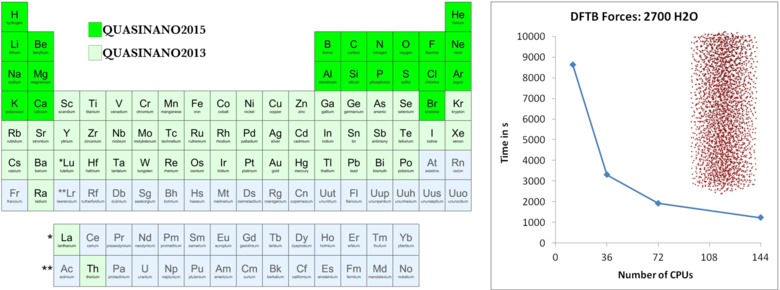Collaborations
ADF and the Amsterdam Modeling Suite were developed to help scientist advance their research with pragmatic computational chemistry tools. ADF originated from the theoretical Chemistry department of the VU in Amsterdam. SCM still strongly collaborates with academic researchers around the globe. Our expert software developers work on optimizing, porting and maintaining new functionality from our partners, so that our academic partners can focus on getting published and cited while our industrial partners can focus on applying it to their research projects.
We are dedicated to make user-friendly and powerful computational chemistry software to tackle problems in various scientific areas. Therefore, we also actively collaborate with hardware partners and other companies, including EU Projects, local collaborations, and other partnerships.
Hybrid quantum computing
With the VU University Amsterdam (Prof. Lucas Visscher and Dr. Arno Förster) and SURF (Dr. Ariana Torres Knoop) we will work on methods to enable hybrid quantum computing. In the Quantum SME project funded by Quantum Delta NL, we will develop embedding methods to unlock the power of quantum computers for the highest accuracy quantum chemistry calculations on the most crucial part of the systems, while including the rest of the system via fast and scalable DFT calculations on classical HPC.
Larger-scale battery and fuel cell simulations
With Wasatch Molecular Inc. and RxFFconsulting we are implementing new methods to couple efficient polarizable force fields (Apple&P) and reactive force fields (ReaxFF) to simulate both reactive battery processes such as SEI formation and degradation as well as larger and longer scale charge mobility processes.
Reducing exciton quenching
In the NWO-funded SEQUOIA project, the TU/e, Simbeyond, VU Amsterdam, SCM, and Merck work together to reduce exciton quenching in order to make OLEDs more efficient. 3 PhD students will develop new methods to model and understand these processes at the atomistic and device level and will ultimately design improved materials and OLED stacks through computer-aided design.
In ADF new methods will be developed to compute triplet-triplet annihilation (TTA) and triplet-polaron quenching (TPQ) rates, which will coupled to the device-level simulations to predict better performing OLEDs.
Multi-scale OLED device modeling
With Eindhoven-based software company Simbeyond, we are working on developing a user-friendly, fully integrated atomistic to device modeling software platform for OLEDs, currently being extended to include excitonic and optical properties.

Previously funded collaborative projects
The computational chemistry made easy project was a collaboration with the Dutch eScience center and Luuk Visscher. The project is centered around QMworks, which is a general workflow and automation tool for quantum mechanical calculations.
A current co-funded project with Luuk Visscher ‘Smarter software for advanced material design’ is through NWO’s LIFT program and aims to implement GW and BSE methods in ADF as well as more advanced embedding and multi-layer methods.
Together with Luuk Visscher and Franco Buda (Universiteit Leiden) we will develop DFT-in-DFTB embedding methods for studying dynamical processes in dye-sensitized solar cells (Solar2Products, see news item in Dutch)
Co-funded by NWO, a collaborative project with BioTools, Luuk Visscher & Wybren-Jan Buma, Vibrational Optical Activity analysis toolbox (link in Dutch) sets out to improve absolute configuration determination by implementing new computational tools to analyze VCD spectra, tackle larger molecules, and develop experimental and theoretical tools for resonance-enhanced VCD (RE-VCD).
V.P. Nicu, Revisiting an old concept: the coupled oscillator model for VCD. Part 1: the generalised coupled oscillator mechanism and its intrinsic connection to the strength of VCD signals, Phys. Chem. Chem. Phys. 18, 21202 (2016).
 Left: DFTB Parameters for the Periodic Table Part 1: Electronic Structure (
Left: DFTB Parameters for the Periodic Table Part 1: Electronic Structure (